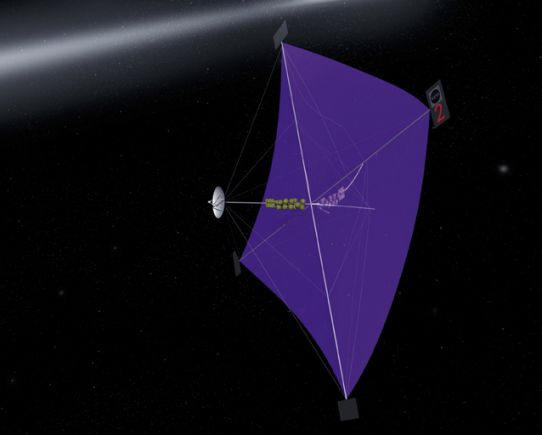Solar Sail

Explanation:
Could
solar
sailing become a future
Olympic sport?
Nearly 400 years ago astronomer
Johannes Kepler observed
comet tails blown by a
solar
breeze and suggested that
vessels might likewise navigate through space using
appropriately
fashioned sails.
It is now widely recognized that sunlight does indeed produce a force
which moves
comet tails and a
large, reflective sail
could be a practical means of propelling a spacecraft.
In fact, the illustration above represents a concept
explored by NASA for an
interstellar probe pushed along by sunlight reflected
from an ultrathin sail.
Nearly half a kilometer wide, the delicate
solar sail would
be unfurled in space.
Continuous pressure from sunlight would ultimately accelerate the craft
to speeds about five times higher than possible with conventional
rockets.
While not quite ready for the Olympics,
NASA has recently tested
solar sail technologies on earth
and the Japanese Space Agency ISAS has deployed
solar
sail material in space.
The Planetary Society in collaboration with the Space
Research Institute (IKI) in Moscow and partners is
preparing
to launch Cosmos 1, a solar sail powered spacecraft.
Authors & editors:
Robert Nemiroff
(MTU) &
Jerry Bonnell
(USRA)
NASA Web Site Statements, Warnings,
and Disclaimers
NASA Official: Jay Norris.
Specific
rights apply.
A service of:
LHEA at
NASA /
GSFC
& Michigan Tech. U.

